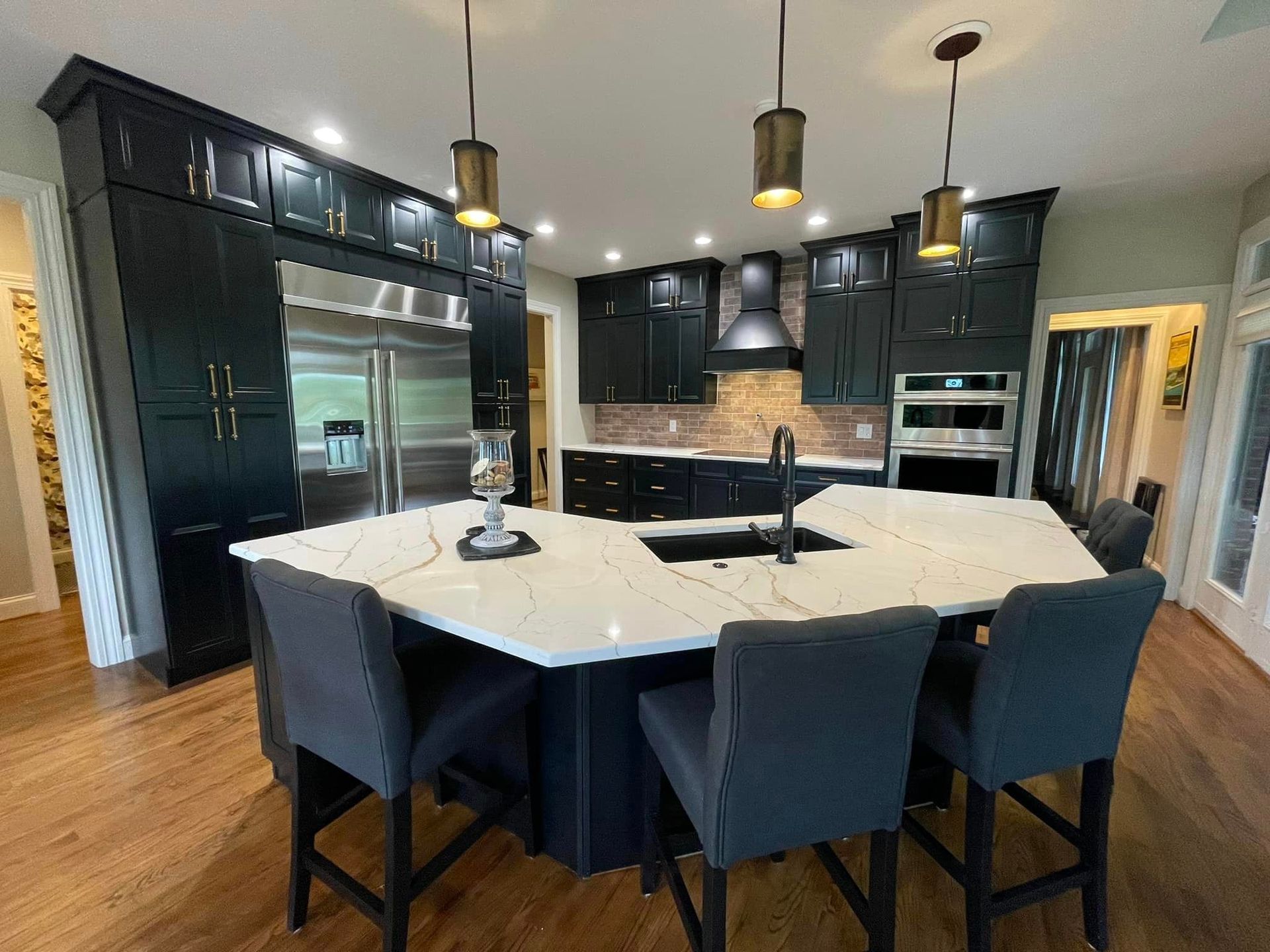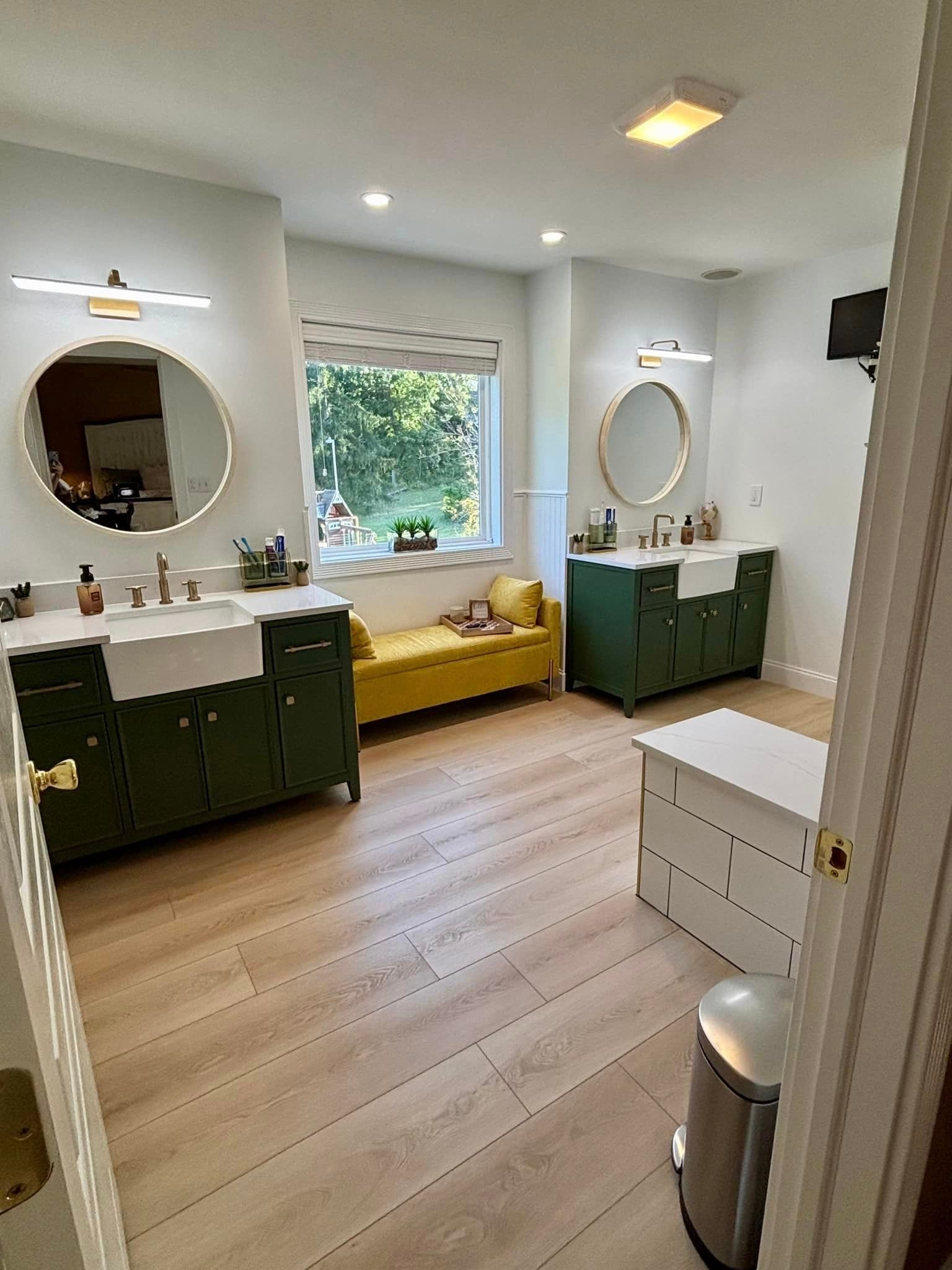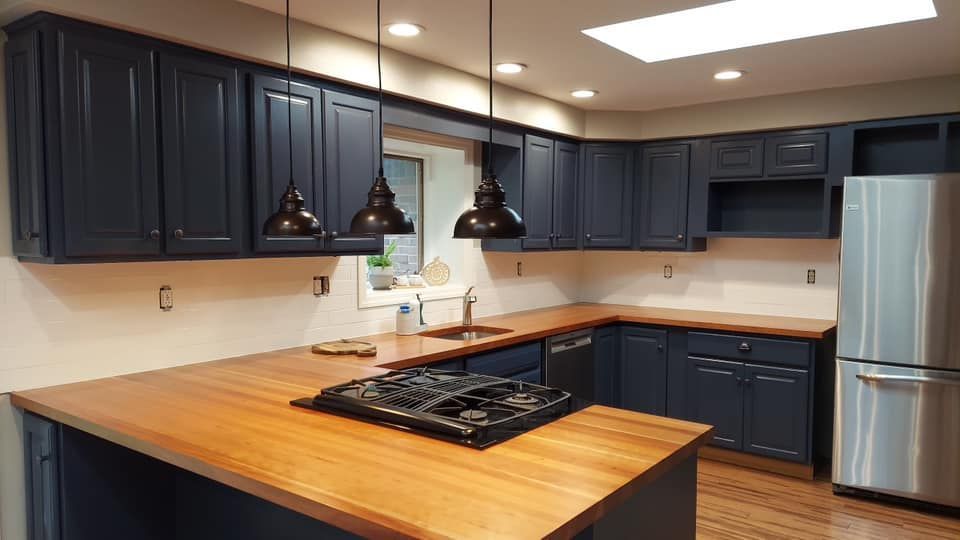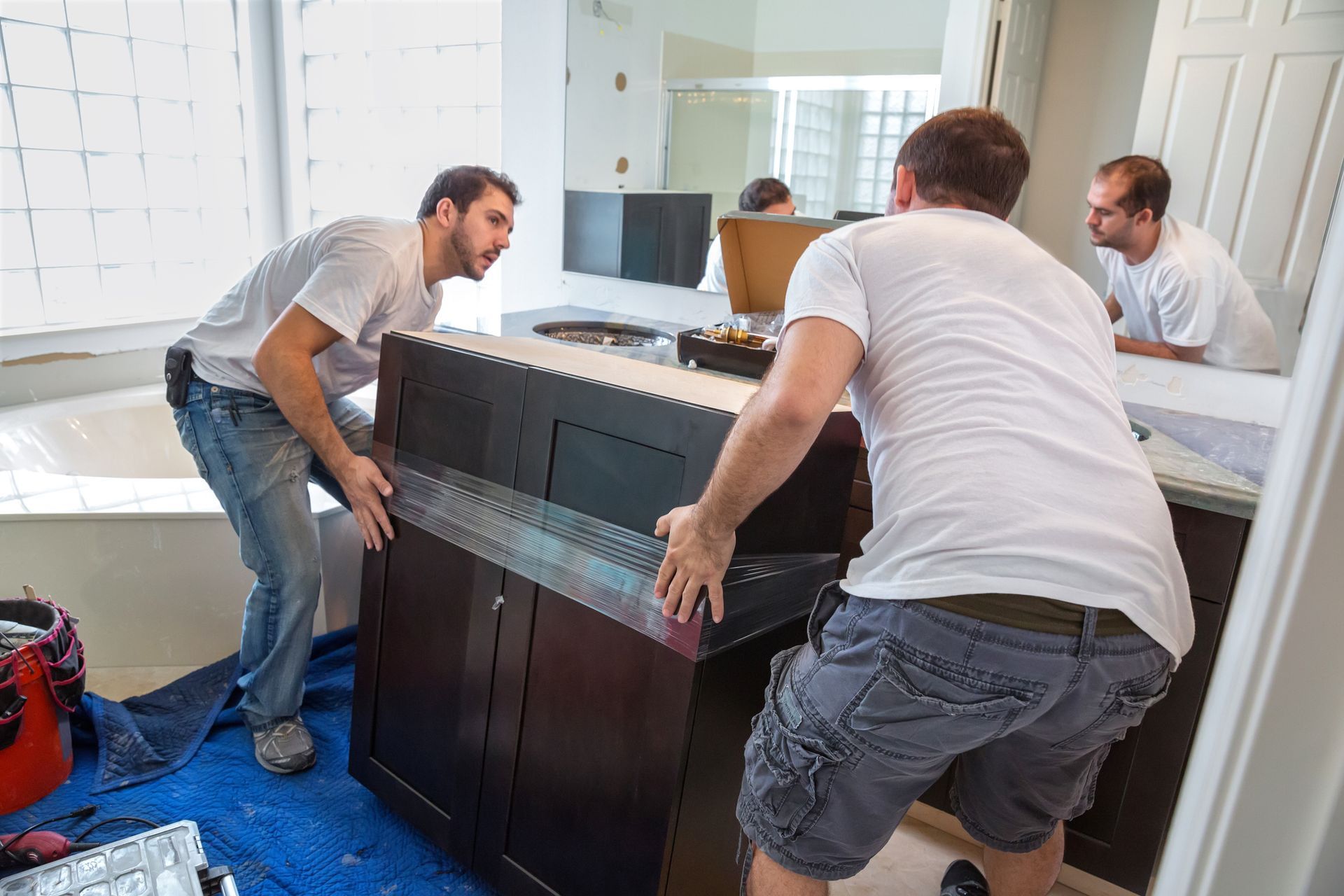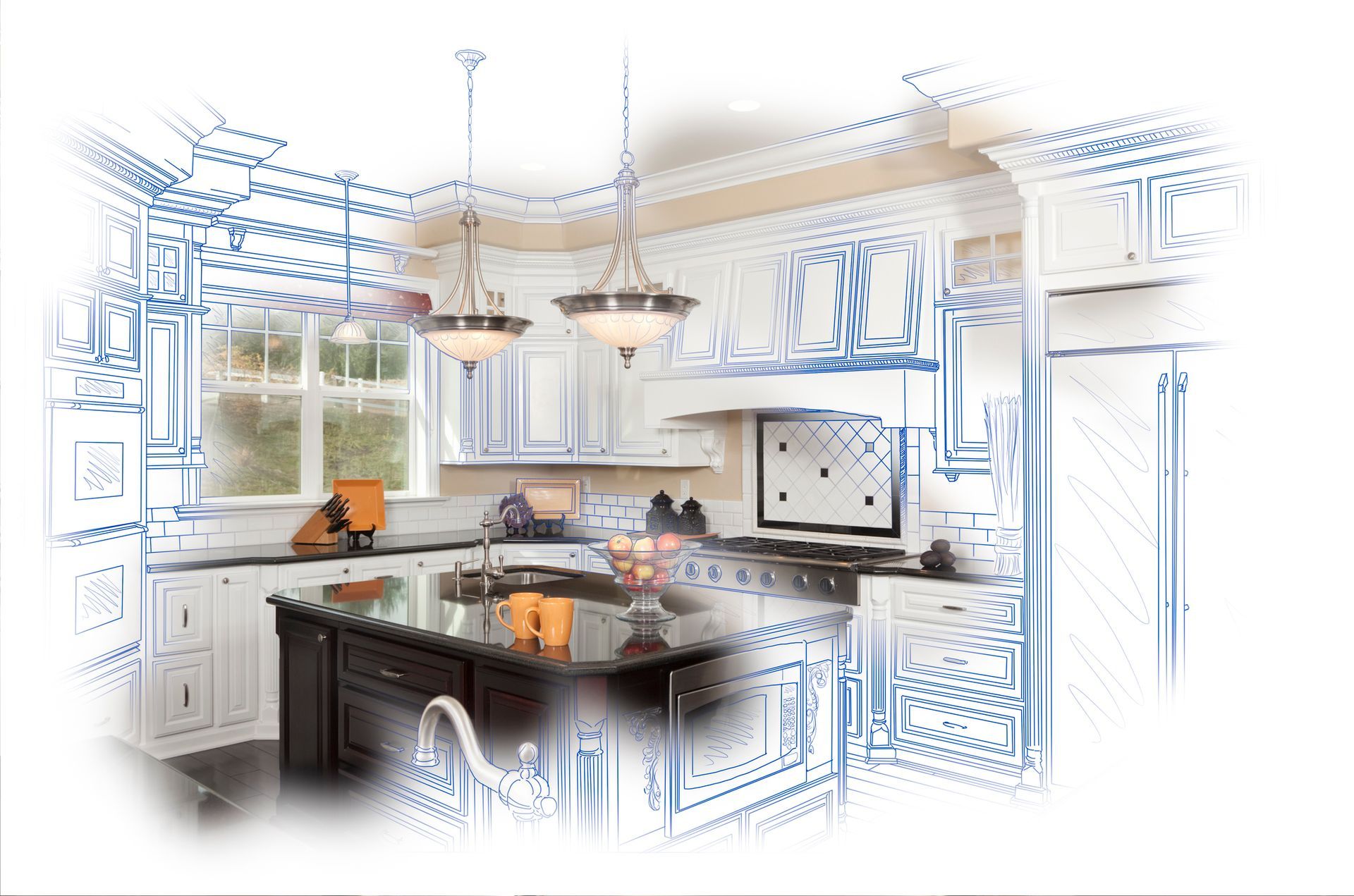Is It Worth It To Move Plumbing During A Kitchen Remodel?
A kitchen remodel is one of the most rewarding projects a homeowner can take on. Not only does it transform the look and feel of your home, but it also improves daily life in one of the most-used spaces. As exciting as it is to pick out new cabinets, countertops, and finishes, there are also bigger layout decisions to consider.
One of the biggest questions is whether or not to move the plumbing. Relocating a sink, dishwasher, or refrigerator line can give you the freedom to create a more functional layout, but it also comes with added cost and complexity.
What Moving Plumbing Involves During Kitchen Remodeling
At first, "moving plumbing" might sound as simple as shifting a sink from one wall to another. In reality, the process can range from a minor adjustment to a major reconfiguration.
For example, you hire a kitchen remodeling company and you decide to add a dishwasher next to an existing sink, the job may only involve extending a water line a few feet. On the other hand, if you want to move the sink to an island in the middle of the kitchen, that requires running new supply and drain lines, cutting into the floor, and ensuring the drain has the proper slope.
Common Plumbing components that might be moved during a remodel include:
The sink – often the most significant change, since it involves both water supply and drainage.
The dishwasher – usually placed near the sink, but still requires water and drain connections.
Refrigerator water line – simpler to move, but still involves rerouting plumbing through walls or floors.
Gas lines – if you're shifting a range or cooktop, this adds a layer of coordination.
Each of these comes with its own level of difficulty, which is why consulting a professional early in the design process is essential.
Cost Considerations For Plumbing Relocation
The cost of moving plumbing can vary dramatically depending on the scope of work. On average, homeowners spend $500 to $3,000 per fixture, but the final price can swing higher or lower depending on the complexity of the project.
Several factors drive the cost:
Distance of the move: Shifting a sink a couple of feet is far less expensive than relocating it across the room. The further the lines need to be rerouted, the more labor is involved.
Foundation type: Homes with crawl spaces or basements often make the job easier since plumbers can access the underside of the floor. Homes built on concrete slabs, however, may require cutting into concrete, which significantly increases labor and cost.
Structural modifications: Moving plumbing isn't just about pipes. It may involve removing cabinets, cutting into walls, or modifying flooring and joists. These additional steps add both time and expense.
Permits and inspections: Most municipalities, including those around Pittsburgh, require permits for plumbing changes. While permits add cost, they also ensure the work is done safely and to code.
Local labor rates: As with any skilled trade, rates vary depending on where you live. In a metro area like Pittsburgh, you may pay more than in smaller or more rural towns, but you'll also benefit from experienced contractors familiar with complex remodels.
For budget-conscious homeowners, it's important to factor in the plumbing costs and how they affect the overall remodel budget.
Benefits of Moving Plumbing
The main reason homeowners consider moving plumbing is flexibility. By not being locked into your current layout, you can design a kitchen that better matches your lifestyle.
For example, moving the sink to an island makes it easy to interact with your family or guests while working in the kitchen, rather than facing a wall. Similarly, adding a prep sink near the refrigerator creates a more efficient workspace for multiple cooks in the kitchen.
Other advantages include:
Opportunity to add modern features: Whether it's a pot filler above the stove or a second dishwasher for large families, moving plumbing allows for upgrades that make daily life more convenient.
Resale value: Buyers are often drawn to kitchens with functional layouts. A remodel that transforms a cramped, awkward space into an open, user-friendly design can help your home stand out in the Pittsburgh market.
Improved workflow: The classic "work triangle" between the sink, stove, and refrigerator is still a gold standard for efficiency. Moving plumbing often makes it easier to achieve that balance.
Cons of Moving Plumbing
Of course, the benefits come with trade-offs. The most obvious downside is cost. Even a relatively minor move can add thousands of dollars to your remodeling budget.
Another drawback is time. Extending a project to reroute plumbing may add days or weeks to the timeline, especially if inspections are required or if multiple trades need to coordinate. This can be frustrating if you're hoping to complete the remodel quickly.
There's also the risk of surprises. Once walls and floors are opened up, contractors may discover old or corroded pipes, hidden wiring, or structural challenges. These issues can lead to additional costs that weren't part of the initial plan.
Lastly, moving plumbing often requires more than just a plumber. Carpenters, electricians, and sometimes even concrete contractors may need to get involved, adding layers of scheduling and expense.
When It's Worth It
Despite the challenges, there are situations where moving plumbing is well worth the investment, but at the end of the day, only you can make that decision
When the existing layout is dysfunctional: If your sink is in a dark corner or your appliances are spread too far apart, relocating plumbing can dramatically improve daily use.
When doing a full gut remodel, if you're already tearing the kitchen down to the studs, the added cost of moving plumbing may be minimal compared to the overall project.
When you plan to stay long-term: If you'll enjoy the convenience and functionality of the new layout for years, the investment pays off in comfort and quality of life.
When resale value justifies it: In neighborhoods where buyers expect high-end kitchens, the cost may be recouped when you sell your home.
When to Avoid Plumbing Relocation
On the other hand, moving plumbing may not make sense in every situation.
If your remodel is primarily cosmetic, for example, replacing cabinets, countertops, and flooring without altering the layout — then keeping plumbing in place helps you stretch your budget further.
It's also wise to avoid significant plumbing changes if you're on a tight timeline. For instance, if you're remodeling before putting your house on the market, spending extra time and money on a new layout may not deliver a high enough return on investment.
And if your existing layout is already functional, you may find that updating finishes provides the fresh look you want without the added cost and hassle.
Expert Tips Before You Decide
Before you make a final decision, keep these tips in mind:
Consult a licensed plumber before committing to a new layout. They can tell you what's feasible and what potential obstacles exist.
Get multiple quotes. Costs can vary, and comparing estimates helps you understand the realistic price range for your project.
Ask about permits. Requirements differ from one municipality to another, but you'll want to be sure your remodel complies with local codes.
Consider partial moves. Sometimes extending a line or making a slight adjustment achieves the functionality you want without a complete relocation.
Work with an experienced contractor. Professional kitchen contractors in Pittsburgh understand how to balance design goals, code requirements, and budgets to deliver the best results.
Call Obringer's Today to Plan Your Kitchen Remodel in Pittsburgh
Deciding whether to move plumbing during a kitchen remodel is ultimately about balancing cost with long-term value. While it's not always necessary, moving plumbing can transform a kitchen into a more functional, modern, and appealing space.
For homeowners in Pittsburgh, the key is to weigh the current limitations of your kitchen against your remodeling goals and budget. If your layout truly holds you back, the investment may be well worth it. Focusing on high-quality finishes and smart updates might be the smarter choice.
At Obringer's Painting & Remodeling, we help homeowners make these decisions every day. Our team provides professional kitchen remodeling services in Pittsburgh, guiding you from design to completion with expertise and care.
Ready to explore your options? Contact Obringer's today to schedule a consultation with trusted kitchen contractors in Pittsburgh.

Author: Derek Obringer
Owner & Founder of Obringer's Painting and Remodeling, Derek Obringer brings attention to detail, together with experience, and superior customer service into each and every home that his company does work.
Painting And Remodeling Blog


